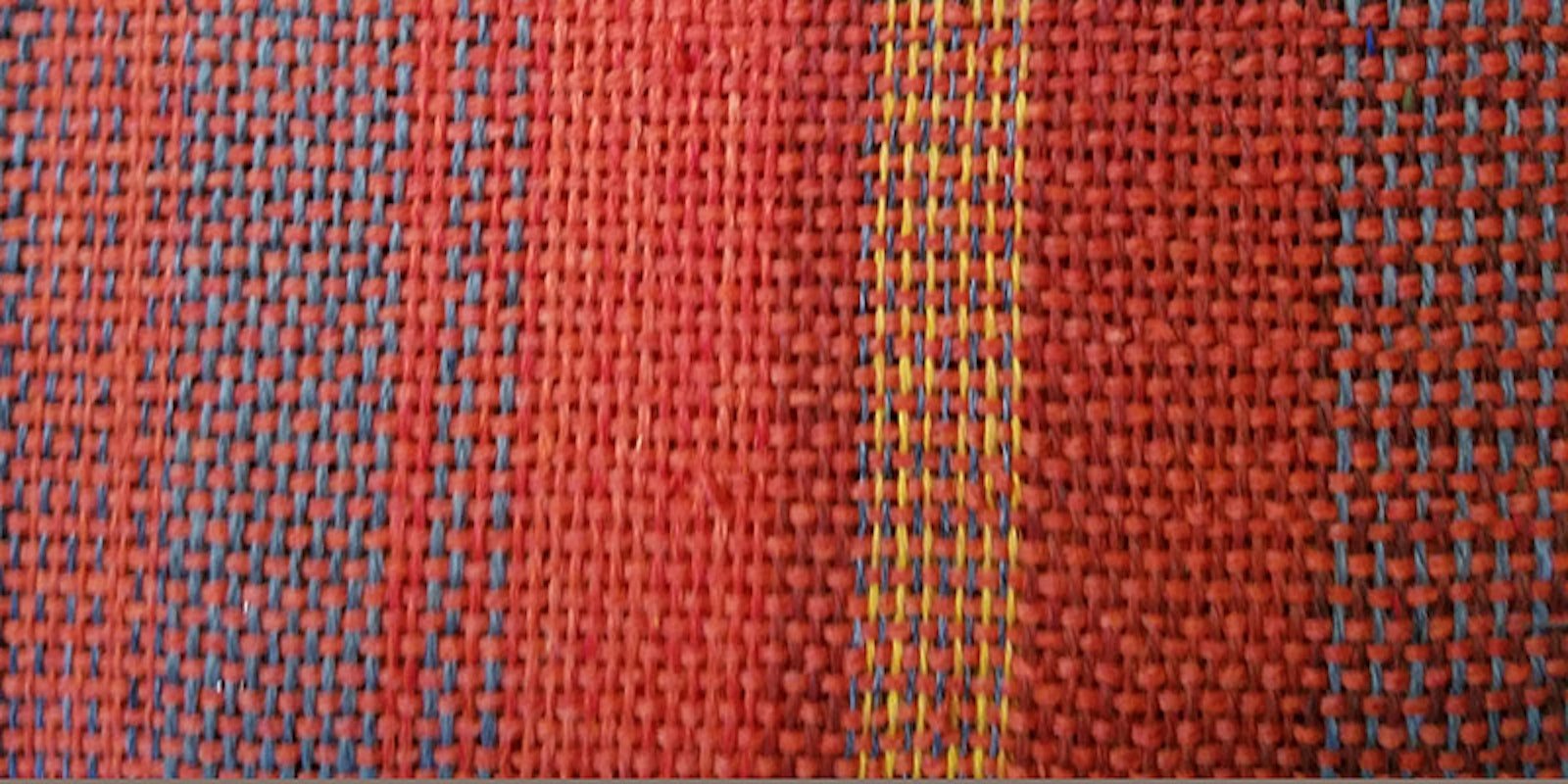Some weave structures I get. Others I need to review every time I weave them. I admire people who are able to read a doubleweave draft and know what the fabric will look like. I’m not in that group. When I start a doubleweave or doublewidth project, I have to go to my library and reacquaint myself with the structure.
I’m currently weaving a doublewidth blanket for my apartment. I’ve woven many doublewidth blankets with halves that mirror each other. For this blanket, I thought it would be interesting to weave a blanket that was balanced without having mirrored halves. I wound my warp in sections and designed my warp in the reed, moving sections around until I liked the general look. When I started to thread, I got mixed up. I had wound and sleyed the layers together, but when faced with threading the heddles, I really wasn’t sure how to proceed. I rethreaded a couple of areas more than twice in my pursuit of balanced but not mirrored halves. Frankly, it was very brain twisty, but eventually, I finished threading and am now weaving.
Most of my blankets have been plaid. After weaving a few, I figured out a better way of stopping and starting my weft when changing colors so I don’t have buildup on one selvedge edge of the blanket. Maybe I read how to do this in one of the many great doubleweave books, and maybe everyone else knows about it, but since I can’t find a reference to this technique, I decided to share it in hopes it helps others with the same issue.
A mini version of my doublewidth draft.
Here is a mini version of my draft. Normally, I weave top, bottom, bottom, top, as shown with the red weft, in the top part of the treadling. I start my weft on the right and have my fold on the left with a heavily weighted floating cotton thread in the dent next to the warp on the left. When I am weaving the top layer, my shuttle goes over that thread, and when I’m weaving the bottom layer, it goes under that thread.
The first time I change weft colors, I start my shuttle on the bottom right hand side selvedge, and treadle bottom, top, top, bottom, as shown with the yellow weft in the draft. The fabric looks exactly the same, and I avoid having two wefts doubled on the selvedge edge when I change colors. My shuttle follows the same path over and under the floating cotton thread on the left. You don’t have to weave two picks of the same color on each layer but I have shown that here for simplicity.
Ending one weft on the top layer and starting the next weft on the bottom layer. Photo Credit: Susan E. Horton
Here is an admittedly bad picture of the two layers on the right side as I am beginning a new weft color. I alternate between the two treadling orders every time I change weft colors. It takes only a bit more concentration to remember the treadling, but I think the result is worth it.
If you haven’t tried doubleweave or doublewidth weaving, I recommend both. They might be brain twisty, but the effects are pretty amazing. I hope this little tip helps you untwist at least one area.
Weave well,
Susan



